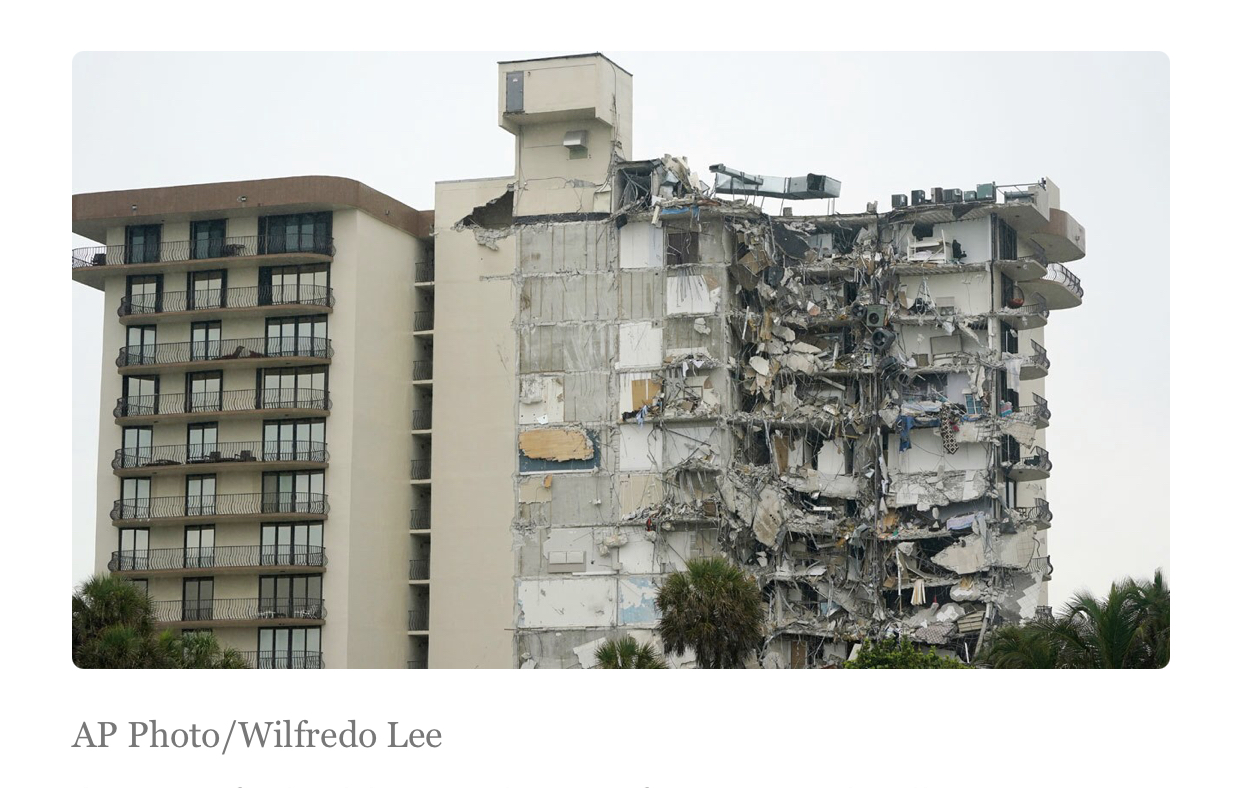As a Canadian structural engineer with significant experience in buildings, this is my opinion on what attributed to the condominium building collapse in Surfside, Florida.
The repair delays, roof construction, effects of new adjacent building and maintenance delinquencies may be catalysts, however in my opinion, the principal reason for the partial collapse of the condominium building may be attributed to the significant loss of stiffness of soil and excessive differential settlement in one zone leading to sudden adverse undermining conditions.
Structural engineers will play an active role all through the rescue or recovery process but their responsibility is multi-fold and be accountable for the safety of responders and survivors of collapse, stability of buildings in the vicinity, integrity of temporary systems and sustained effort at site to ensure compliance.
This collapse has initiated dialogs at various levels, both politically and legally, to ensure that the built structures at such locations shall meet higher design and construction standards along with must needed metrics for monitoring and inspections.
The state and federal government should pass laws forcing frequent structural inspections, preferably every 7 years for buildings higher than 7 stories and within 1 mile (1.6 km) from the oceanside and large water boundaries.
The documents must include relevant reports, repair estimates, reserve fund forecasts and the early start timelines for the implementation of citations. All documents shall be reviewed by the authorized building officials and related permits be issued within 15 days for major remedial work and 30 days for minor remedial work based on impact and not on costs.
The information must be made available to property managers, condo associations and building owners. The occupants, property managers, lenders, insurers, realtors and all other stakeholders must have access to these documents at the site.
 Article by Dr. JAG MOHAN, Ph.D., P.Eng., IntPE, FEC (Canada)
Article by Dr. JAG MOHAN, Ph.D., P.Eng., IntPE, FEC (Canada)



